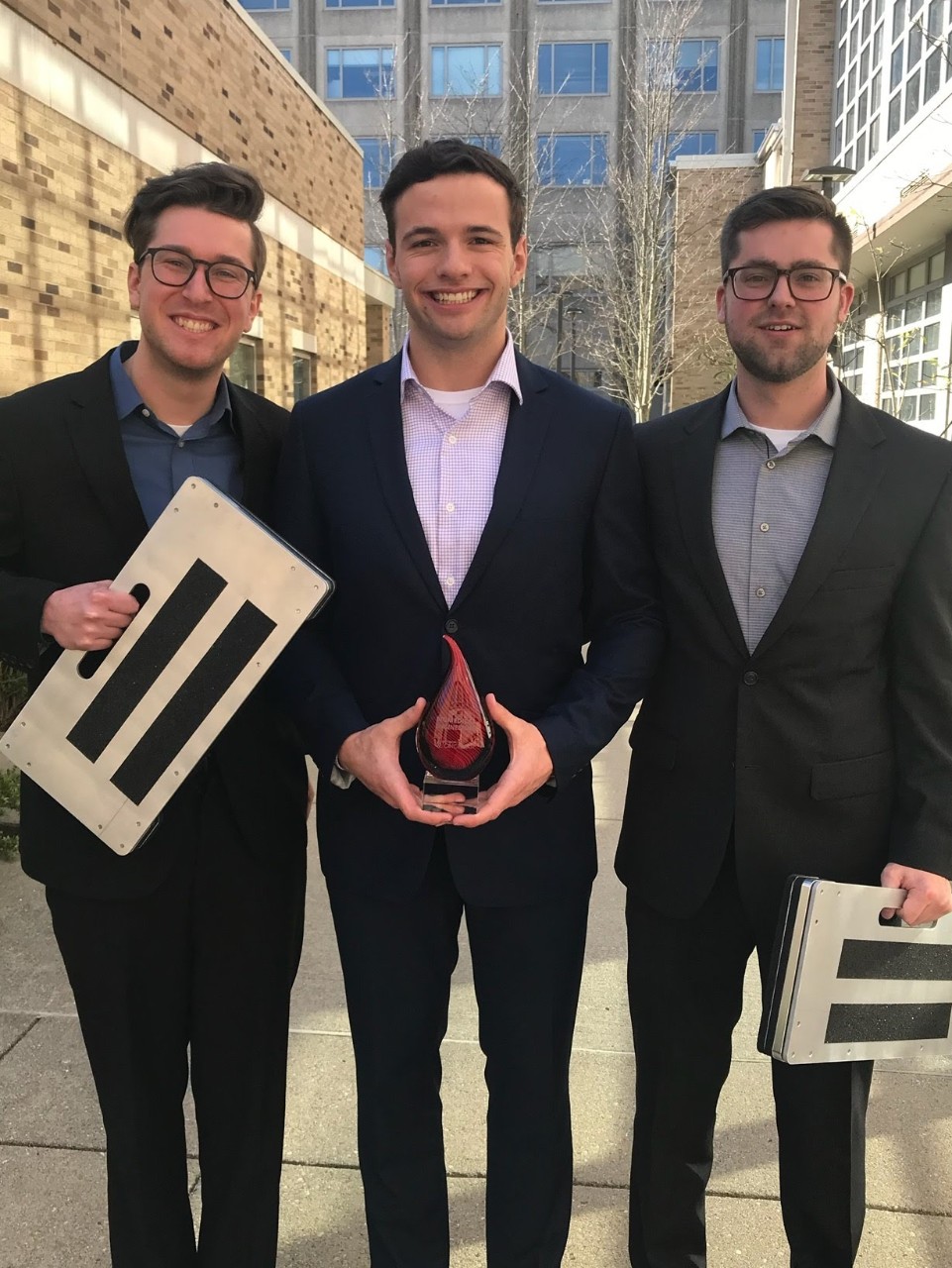
Biomedical engineering students create medical device solutions
Capstone projects showcase device concepts that address real-world problems
University of Cincinnati biomedical engineering students showcased their innovative medical device solutions to industry members at the 11th annual “Do It or mDIEp” competition on March 13.
The event is presented by the Medical Device Innovation and Entrepreneurship Program (MDIEP) track within the Department of Biomedical Engineering in UC's College of Engineering and Applied Science.
As part of a senior capstone project in UC professor Mary Beth Privitera’s medical device design course, the student teams worked directly with physicians, nurses, medical-device manufacturers and other professionals to identify a real-world problem and then design a device that could make an impact. Students lead the design process, from theory and experimentation to the production of a functional prototype.

The first-place team at the medical device competition comprised Tyler Antesberger, Shane Bender and Brad Walther. Photo/provided.
Students presented their solutions under a time limit and a few minutes to answer questions. The audience included their classmates, UC faculty and industry professionals, who all voted on the projects following the presentations.
The first-place team created a system for athletes to measure isometric exercise through customized, wireless force plates that communicates the force exerted via Bluetooth to an iOS app. The team worked directly with a coach from the UC men’s basketball team to determine what he needed from a device.
“The statistics that our iOS app gives allows a goal and can be used to track progress of the athlete to ensure they are getting the most out of each exercise,” said Tyler Antesberger, team member and biomedical engineering student who recently graduated. “Isometric exercise is a great way to measure rehabilitation from injury, baseline strength, and in-season strength due to its mild effect on the muscles."
Additional capstone projects explored solutions such as an RFID tagging system to prevent surgical instruments from being left behind during surgery; an alternative EKG electrode for more accurate readings on hairy or sweaty skin that isn’t conducive to traditional adhesive electrodes; an inflatable spine support system to address back pain; and a device to secure PICC lines used for infant patients who might squirm and accidentally pull out the tube.
Related Stories
UC’s microchip training includes innovative VR
July 2, 2024
To build a virtual microchip factory, University of Cincinnati doctoral students turned to the real one where they work. UC launched a new training program for microchip manufacturing in advance of the new fabrication plant Intel Corp. is opening in Ohio.
UC grad’s innovative tech to manage ER wait times
June 25, 2024
When launching Teravus, a health care triage management startup, Jason Murray turned to the University of Cincinnati's Center for Entrepreneurship and the 1819 Venture Lab for guidance and funding.
Carnegie Foundation recognizes UC with Leadership for Public...
June 24, 2024
UC part of inaugural group honored for focusing on developing students as leaders
